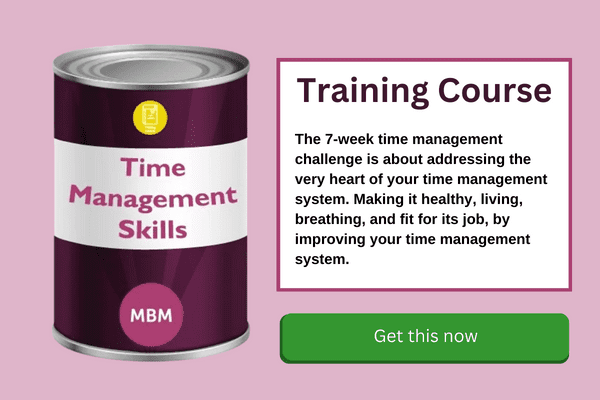What’s On Your To-Do List Today?
The 5 Priorities Model helps leaders and managers navigate challenges and opportunities, make plans and set goals. It doesn’t replace value statements, mission statements, team charters, team plans and all that good stuff. However, putting the emphasis on identifying your priorities will bring focus, clarity and closer collaboration.
This article looks at what the 5 Priorities Model has to offer, and different ways you can use it. In Stephen R. Covey’s ‘The 7 Habits of Highly Effective People,’ Habit #1 is to Be Proactive and Habit #2 is, Start with the End in Mind. Don’t just think about today, or you’ll be firefighting all the time! Be clear about where you want to get to. That brings us to Mr C.’s Habit #3, Put First Things First. And that’s where the 5 Priorities Model comes in.

The 5 Priorities Model is A Good Habit for Life
Everyone has tasks they consider more important than other stuff they’ve got to do. From start-ups to corporates, the question is how should leaders and managers prioritise? The 5 Priorities Model offers a way through the maze.
What’s the Purpose of the 5 Priorities Model?
The 5 Priorities Model helps individuals and organisations focus their energy and resources to maximum effect. It does this by picking out and focusing on priorities that need to be done first. Five is a handy number for people to remember. In fact, it’s literally HANDY, as we have five fingers on each hand!

What is the 5 Priorities Model?
The 5 Priorities model cuts through the noise, helping you focus on what’s REALLY important. In strategic planning, for example, people look at:
Sticky Learning ® is 7 times more effective than 1-day training courses. Plus, you will get a Chain of Evidence proving your Return on Investment. Discover soft skills training that changes behaviours long term.

Where Are We Now?
- The current business: Your present products, services, customers, suppliers, premises, people, expertise and experience.
- The financial situation: Revenue, costs, borrowing, profitability etc.
- Opportunities for growth: Consumer trends, new products, new services, people.
- Threats: Market changes, economic and geopolitical trends, competitors, and government action.
Where Do We Want to Be?
- Mission, vision and values: What we want to be as a business, and what we see as important.
- Objectives and goals.
- The plan of action.
Under each of these headings, you can pick out 5 priorities to focus on.
Picture This – Show and Tell.
When you’re talking about your vision, make it VISUAL! Set up your conversation about the 5 Priorities with slides using a 5 Steps Strategic Objectives template. Looking at long-term goals? Show your mission and vision, objectives and priorities with circles radiating out and arrows pointing to your chosen priorities. Presenting organisational goals? Use the template to depict strategic objectives like operational excellence, and business expansion, again with arrows pointing up the priorities. And so on. It’s yours, you own it.
The 5 Priorities idea isn’t only helpful with strategic planning. You can apply this technique of picking out 5 priorities in other areas of business life. Here are more examples:

What are Managers’ 5 Priorities?
Priorities management enables managers and their teams to avoid constant firefighting:
- Triage tasks: Think of triage nurses in A & E, assessing patients’ problems and deciding what to do. You look at the jobs to do and assess their relative priority. That way, you don’t go off and work on tasks as they come in, leaving other things uncompleted. The inbox you never empty is a common nightmare. But triaging tasks helps you get through it.
- Manage workloads: Learn how to manage your work effectively so you can do the things you need to. That will also ensure you and your colleagues are aligned with the business’s goals and needs.
- Keep projects on track: Being able to work with your team to prioritise tasks enables you to keep the project on track. Be firm but try not to micromanage. Resist the temptation!
- Visualise your project: Being able to picture what tasks you have to do is also important. Scheduling items with a time of how long they should take helps you see what’s outstanding to hit deadlines.
- Build teamwork and work-life balance: Prioritising tasks will also help you and the team with this important aspect of business life. Knowing what you have to do each day, and in which order, makes you more productive and people can pitch in.
What are 5 Priorities for CEOs?
McKinsey suggests these 5 priorities for CEOs in the ‘next normal:’
- Centre your strategy on sustainability: Act to ensure sustainability is more than a buzzword. “Climate” is an increasingly important way for businesses to create a competitive advantage.
- Transform in the cloud: Digitisation and eCommerce are transforming all manner of business processes. By adding speed and scale, the cloud is critical to innovation. Leadership needs to be open to where it could take them next.
- Cultivate your talent: Talent is businesses’ most important natural resource, and leading companies are showing how to do it. They coach and empower teams: deploy talent based on skills, not hierarchy: and fill gaps through training and development. It shows in the bottom line, as a better employee experience delivers better results. And people stay longer.
- Press the need for speed: Many businesses moved fast in the pandemic, pivoting to move forward. Now, say McKinsey, it’s important to maintain that pace by designing it into the organisation. It’s back to proactivity. Think of the speed of response as a muscle to develop. Anticipate shifts in demand and focus on outcomes.
- Operate with purpose. People want to work in companies with an engaging purpose– and they’ll leave if they don’t find it. Companies that “execute with purpose,” say McKinsey, are more likely to generate long-term value. And people expect businesses to do more than make money for shareholders – though that’s essential.
You can download the full report: What matters most? 5 priorities for CEOs in the next normal at mckinsey.com.
5 Priorities for Entrepreneurs and Start-ups

You could be the next Elon Musk or Richard Branson. The question is, are you prioritising correctly now? Here’s what NerdWallet personal finance website founder Jake Gibson lists as his 5 priorities for entrepreneurs:
- Don’t get seduced by task-based lists: The elements of prioritisation are simple. Know what tasks you need to do and rank them in priority order. Jake is another fan of Stephen Covey’s 7 Habits. Quoting the book’s section on Habit #3, Put First Things First, Jake mentions Covey suggests ranking tasks across 4 metrics. These are, important or not important, and urgent and not urgent. You put the urgent and important things first, and the not important or not urgent things last. That’s fine for leaders and managers in established companies. But in a start-up or small business, EVERYTHING is important, so you may never get there. Instead,
- Focus on themes that will drive growth: What are the two or three things you can do to drive growth? You have to understand the drivers of your business. If it doesn’t move those, it isn’t a priority.
- Forget perfectionism: It can be really hard to let things go unfinished. But if you’re serious about prioritising, you must be able to drop something to focus on another task with more potential to drive results.
- Do the hardest thing first: Whatever you don’t want to do, do it first! That eliminates the nagging dread that will sap energy from your other tasks as you postpone the inevitable.
- Don’t plug leaky boat holes – switch boats: Prioritisation pressure never goes away. If you’re always firefighting, either you’re not prioritising, OR you have a more serious problem. It’s time to ask yourselves, where are we now, and where do we want to be?
Applying the 5 Priorities in Sales and Marketing
When markets get tough, like in the current climate, leaders and managers face increasing pressure. Sales become harder to achieve, and customer relationships become strained. Applying the 5 Priorities Model helps us understand this. Here are some priorities you need to think about:
The 5 Priorities of a Customer

- The level of effort it needs to convince the customer to buy your product or service
- Other goods or services or providers could meet this need: If customers have other options besides yours and needn’t settle on a specific product or service right now, the priority is lower. You’ll have to put more effort in and spend more on marketing.
- The severity of your customer’s need or want for the product: This is sometimes also referred to as their ‘level of pain.’
- The urgency: If the customer’s need or want must be fulfilled in a short period, they’re more likely to buy at the first introduction.
- The costs of the product: The price should be at a level that will increase the customer’s priority. Customer priority goes up if they perceive the product or service won’t be available at that price for long.
What’s Your Customer Success Model? It’s About The Relationship
To really understand your customers, you need to grasp which customer success model describes your relationship. People talk about 5 customer success models:
- Firefighter: The person in your business responsible for customer success – the “Chief Customer Officer” – owns the customer relationships. If you’re the founder, eventually you need to loosen the reins and develop people to work with your customers.
- Sales-oriented: You have low product complexity, and you’re in a competitive sales scenario. There’s little or no customer relationship. Customer success here is about revenue, and upselling.
- Service-oriented: You have a fairly complex product or service, and customer success is related to specific customer needs. It’s less about increasing revenue and more about building touchpoints with the customer.
- Integrated: There are moderate levels of complexity. The head of sales “owns” existing customers, and keeps the team focused on closing new business. The boss needs to be focused, and success depends on the team’s maturity and stability.
- Partnership: Your product is very complex and/or competitive. You focus on major customers, while also pushing new sales.
5 Priorities in Customer-Facing Businesses

Leading on from this last list, the Institute of Customer Service quotes management expert Ken Blanchard’s 5 priorities for customer service:
- Meet rising expectations: Consistently providing a personalised and tailored response to customers creates a real competitive edge and diminishes negatives.
- Build customer connections: Great products and prices bring customers in, but what keeps them coming back is feeling cared for. Customer-facing employees are the frontline, but if relations with the boss are poor, poor customer service will follow. Support your team, and set them up for success.
- Sow the seeds of leadership in others: Exemplary leaders share the same qualities, whatever industry you’re in. This starts with articulating the company vision and values to the team. Then comes walking the talk, being a role model for behaviours you expect from others.
- Empower employees: Often being a good service leader means giving staff freedom to solve customer problems and build relationships.
- Instil trust: If you trust employees to do their jobs well, don’t micromanage them or constrict them with rules or regulations.
Remember These Top 5 Priorities in Sales and Marketing
When interacting with customers or clients, experts keep these things in mind:
- Be proactive versus reactive.
- LISTEN more than you talk. Listen for the little words, either spoken or written, telling you what the other person is really thinking.
- Display empathy.
- Always strive to delight your customer.
- Anticipate customer needs, to stay one step ahead.
Prioritise Your Way to a Good Customer Success Strategy
You need to understand and support your customers every day, every step in their journey. It means managing the customer and their expectations to align goals, reduce churn and increase upselling opportunities. You’ve got to do all this while thinking about all your other priorities. Prioritise taking this on board, and you’ll get there.
And Finally: What are Your Top 3 Priorities at Work?

Jim Collins has written many books on what makes successful companies tick. He’s quoted as saying, “If you have more than three priorities, you have NO priorities.” Jim reckons you can reduce your work priorities to three – putting people first, employee engagement and time utilisation.
- Putting people first: Are your team getting the most from their work? Do they have the right resources to help them? If they don’t, how can they perform at the highest level? If you aren’t putting the customer first, something’s wrong. Your service will suffer, and the quality of your work may also decrease,
- Employee engagement: Are your people actively engaged with their work? Are they being challenged when working on moderate, complex tasks? Do they see the work they’re doing as fulfilling?
- Time management: Is your people’s time being used efficiently? It’s not if they aren’t doing productive tasks.
You can start developing your prioritising skills, whatever your job, applying Stephen Covey’s 4 quadrants of time management. Here they are again – urgent and important, important but not urgent, urgent but not important, and neither urgent nor important.
Otherwise, what about this idea? Think of jobs you have to do as ‘A’ tasks: Do it: ‘B’ tasks: Plan it: ‘C’ tasks: Delegate it: ‘D’ tasks: Drop it. Start prioritising your working life, and you’ll really notice the difference.




